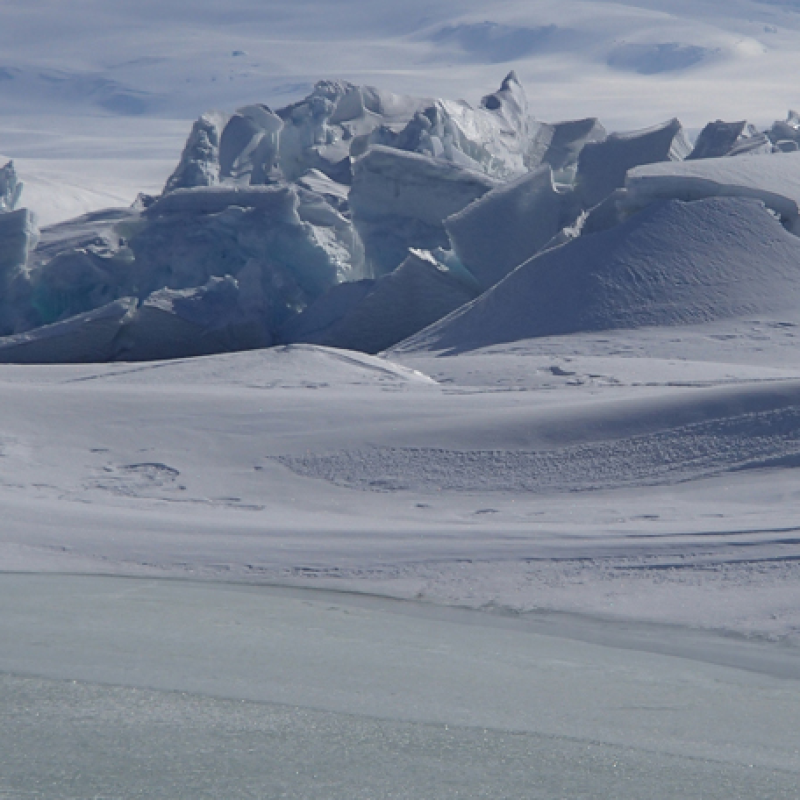Earth was once a giant snowball, here's why


About 700 million years ago, before multicellular animals emerged or plants made their way to land,
Earth was plunged into an ice age that lasted for 57 million years.

Most people like simple explanations. Occam's Razor tells us that the simplest explanation is usually the right one.
But... Occam's Razor applies to all the data available. And sadly for "simplicity", there's often contradictory data that must be resolved.
It would be "simpler" if climate followed invariable cycles. But... it doesn't

An artist's illustration of a 'snowball Earth'. NASA February 8, 2024
About 700 million years ago, before multicellular animals emerged or plants made their way to land, Earth was plunged into an ice age that lasted for 57 million years.
Now, Australian geologists believe they have figured out what caused Earth to enter its snowball era, when ice covered most continents and oceans. The answer: all-time low levels of volcanic carbon dioxide in the atmosphere.
Lead author of a study published in Geology , Dr Adriana Dutkiewicz, a sedimentologist at the University of Sydney, says: "Imagine the Earth almost completely frozen over. That's just what happened about 700 million years ago; the planet was blanketed in ice from poles to equator and temperatures plunged.
"However, just what caused this has been an open question," she says.
"We now think we have cracked the mystery: historically low volcanic carbon dioxide emissions, aided by weathering of a large pile of volcanic rocks in what is now Canada; a process that absorbs atmospheric carbon dioxide."
The extended ice age, also called the Sturtian glaciation, lasted from 717 to 660 million years ago.
"Various causes have been proposed for the trigger and the end of this extreme ice age, but the most mysterious aspect is why it lasted for 57 million years - a time span hard for us humans to imagine," says Dutkiewicz.

Sturt Formation glacial deposits from the Sturtian Glaciation circa 717–664 million years ago in the northern Flinders Ranges, Australia, close to the Arkaroola Wilderness Sanctuary. Research lead author Dr Adriana Dutkiewicz from the School of Geosciences, the University of Sydney, pointing to a thick bed of glacial deposits.
Professor Dietmar Müller/University of Sydney
Glacial debris left by ancient glaciation from this period can be found in the Flinders Ranges in South Australia. A recent geological field trip there - led by co-author Alan Collins, a tectonic geologist from the University of Adelaide - prompted the team to use EarthByte computer models to dig deeper into its cause.
They connected a plate tectonic model, which shows the evolution of continents and ocean basins after the breakup of the ancient supercontinent Rodina, with a model that calculates CO 2 release from underwater volcanoes along mid-ocean ridges.
The researchers found that the start of the Sturtian glaciation correlates with an all-time low in volcanic CO 2 emissions, which remained relatively low for the entire ice age.
"At this time, there were no multicellular animals or land plants on Earth. The greenhouse gas concentration of the atmosphere was almost entirely dictated by CO 2 from volcanoes and by silicate rock weathering processes, which consume CO 2 ," says Dutkiewicz.
Motions of continents (grey) and plate boundaries (orange) from 850 to 540 million years ago, a time before complex life evolved. Subduction zones are shown as toothed lines and ocean basin depth is coloured light green to dark blue. Snowflakes indicate a "snowball" ice age, with ice covering most continents and oceans.
Professor Dietmar Muller and Dr Ben Mather/EarthByte Group/The University of Sydney
Nota from Outis : I do not know how to make this video work. It's code is
<iframe src='//players.brightcove.net/5483960636001/HJH3i8Guf_default/index.html?videoId=6346441848112' allowfullscreen frameborder=0></iframe>
Co-author Professor Dietmar Muller, a geologist from the University of Sydney says geology ruled climate at this time. "We think the Sturtian ice age kicked in due to a double whammy: a plate tectonic reorganisation brought volcanic degassing to a minimum, while simultaneously a continental volcanic province in Canada started eroding away, consuming atmospheric CO 2 .
"The result was that atmospheric CO 2 fell to a level where glaciation kicks in - which we estimate to be below 200 parts per million, less than half today's level."
The findings help scientists better understand how sensitive the global climate is to changes in atmospheric carbon dioxide concentrations.
Dutkiewicz adds: "it is important to note that geological climate change, of the type studied here, happens extremely slowly. According to NASA, human-induced climate change is happening at a pace 10 times faster than we have seen before."
Imma Perfetto is a science journalist at Cosmos. She has a Bachelor of Science with Honours in Science Communication from the University of Adelaide.








Actions have consequences.
Sometimes, inaction has consequences.
Actions or inactions, humans can in no way control climate. On the Earth can control its climate.
Semantics! Control? No. Impact? Definitely...
So, now volcanoes are responsible for planetary warming? 700 million years ago the atmosphere still contained significant amounts of methane, ammonia, water vapor, and small amounts of oxygen. The atmosphere was not a mixture of nitrogen and oxygen with trace amounts of other gases mixed in. For example neon gas was more abundant in the ancient atmosphere than carbon dioxide is in today's atmosphere. The greenhouse effect in that ancient atmosphere was quite different than in today's atmosphere.
The biggest factor that cannot be accounted for is solar activity. We don't know what was happening on or in the sun. I'm not sure we really know how much the sun has cooled over the last billion years. We also don't know if earth's orbit around the sun was perturbed in some way. A dramatic shift in tectonic activity could be evidence of a mass exerting gravitational influence on earth. We don't know if earth was struck by a swarm of asteroids or space dust.
Yeah, climate change is a real and serious problem. But that's no excuse for warping science to be more competitive for grant money.
Damn Canadians, always trying to ruin it for others
Shoulda dumped a whole lot of maple syrup on it...
Why do they always fall back on "It's because of CO2"?
How about a simpler explanation, a large celestial object collision with Earth caused a high atmospheric temperature driving off much of the atmosphere leaving a much less dense atmosphere, similar to Mars, thus less heat retention causing the water vapor in the atmosphere to condense out and form ice on the surface.